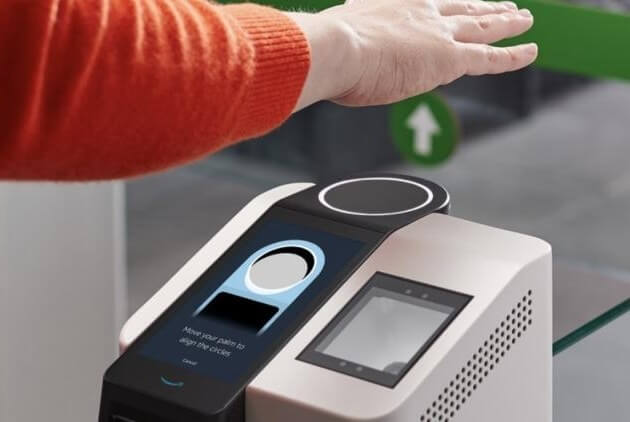
Amazon unveils a way to pay with your palm in stores
Amazon One lets users enter some of the company’s stores and buy products with the palm of their hand.
Amazon wants to speed up shopping trips by letting users pay with the palm of their hand.
The company on Tuesday launched Amazon One, a new biometric technology that enables shoppers to enter and pay for items at stores by placing their palm over a scanning device. In order for it to work, users first have to connect their palm to a stored credit card. After that, users are able to pay with their hand.
To start, Amazon One will be an entry option at two of its dozens of cashierless Amazon Go stores, located near its Seattle headquarters. Over time, Amazon plans to introduce the technology at more of its physical stores in the coming months.
Amazon also hopes to sell the palm-scanning technology to other companies like retailers, stadiums and office buildings. The company said it’s already in “active discussions with several potential customers.”
It’s a model Amazon has experimented with before. In March, Amazon said it will begin selling the technology powering its cashierless stores, called “Just Walk Out,” which allows shoppers to enter a store by scanning an app and then exit without waiting in line. Cameras and sensors track what items customers choose and charge them when they leave.
Amazon said it’s in “active discussions” with third parties that want to introduce the palm-scanning technology to their stores.
Amazon’s efforts to license technologies to other retailers could hit some roadblocks. It’s unclear whether competing retailers will want to adopt the technology in their stores and potentially hand over customer data to a rival.
Dilip Kumar, Amazon’s vice president of physical retail and technology, told Recode that Amazon One would collect data on where customers shop, but not what they purchase or how much time they spend in third parties stores.
Amazon is a powerful retail player both online and offline. Amazon is expected to claim nearly 40% of the e-commerce market this year and has made significant inroads into the brick-and-mortar retail space with its slew of Go stores, Whole Foods locations, 4-star stores and Amazon Books locations, along with a new chain of Fresh grocery stores.
Shoppers may also be wary to hand over biometric data to one of the country’s largest retailers. Amazon addressed privacy concerns in the launch of Amazon One, saying it designed the technology to be “highly secure.” Palm images aren’t stored on the Amazon One device and are instead encrypted and stored in a secure area that was “custom-built in the cloud.” Amazon One users will also be able to request to delete their biometric data after using it, either via the device or online.
Amazon said it chose to use palm-scanning technology because it’s “considered more private” than other biometric alternatives, which include things like eye-scanning technology or facial recognition. “You can’t determine a person’s identity by looking at an image of their palm,” Amazon added.

